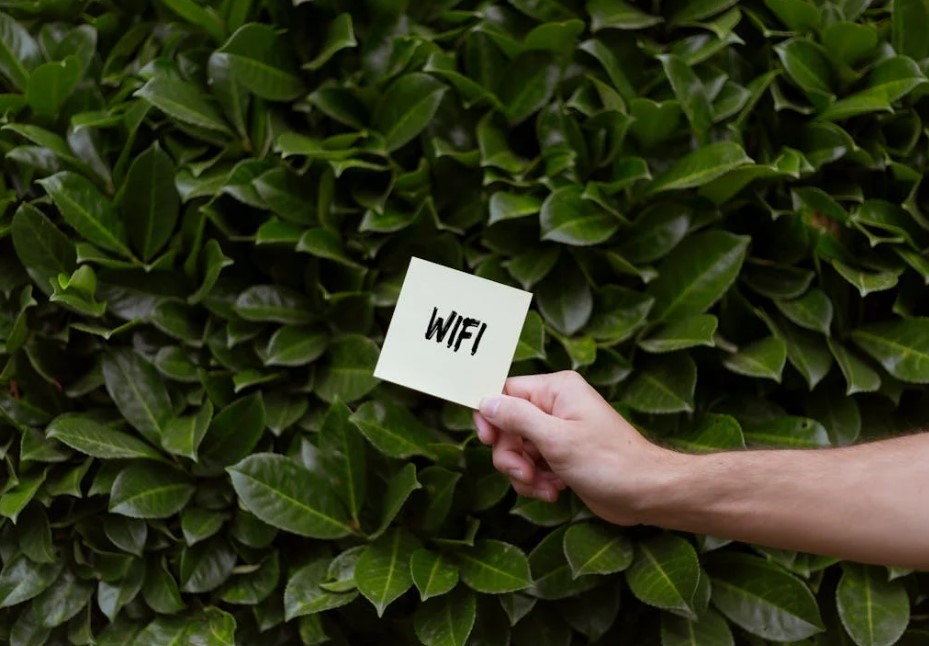It’s on each of us to enhance our Wi-Fi security. Neglecting this can lead to serious hacking issues, putting our safety at risk. Your role in this is crucial.
Today, you’ll be equipped with practical techniques that you can easily implement to secure your Wi-Fi and significantly reduce the risk of hacking.
Update your SSID to a unique name
Every WiFi router has an SSID.
If you want to know what is an ssid, continue reading.
An SSID is like your home’s address. People need to know the address in order to locate it. For Wi-Fi, an SSID works like this:
- Your SSID is your Wi-Fi router’s distinct username.
- Users need to know your SSID to locate the Wi-Fi network and click the right one to connect.
- When clicking the right SSID, users will likely be asked to enter a password to gain access to the Wi-Fi.
Not enough people change their SSID, which is dangerous. Hackers have readily available tools that can easily hack your Wi-Fi and personal information if you don’t make the SSID unique. Changing your SSID the day you get your Wi-Fi router will guarantee maximum protection.
Invest in safe WiFi companies
When you choose your Wi-Fi, you must make sure that you choose a reputable company. Choosing a random name that you haven’t heard of might hinder your safety. The top and most-reviewed Wi-Fi companies will have security measures installed on their devices to maximize your safety.
Choosing the right equipment for your Wi-Fi will make sure that very little can happen, in terms of hacking. The company will help you safely install your device and guide you on remaining safe.
Activate two-factor-authentication
Two-factor authentication is one of the safest practices for wireless network security. With this in place, it will make it much more difficult for hackers to get into your system.
Two-factor authentication requires two passwords to enter the Wi-Fi. First, users are asked to provide the password. Then, they might be asked to submit a passcode sent to their device or enter a security email address. With a double-layer secure system in place, your Wi-Fi setup will be much safer.
Create a strong password
Like your Wi-Fi SSID, you will need to change your password after setting up the router. Using the factory password might make it easier for hackers to get into your system.
Whereas a unique and strong password should make things more difficult. Avoid using birthdays and common words. Instead, use random words with a mix of numbers and punctuation. Complex passwords make it much more difficult to hack.
Enable network encryption
Encryption jumbles data sent across your network, making it harder for unauthorized users to intercept and read. Make sure that your router is using the most recent encryption standard, WPA3.
Use WPA2, which is less secure than WPA3 but still secure if your router does not support WPA3. Steer clear of old and unsafe encryption techniques like WEP. To avoid any hacking issues, you must do this the day you get your Wi-Fi router and set it up.
Update the firmware often
Wi-Fi routers require regular firmware updates. Out-of-date firmware makes it easier for hackers to exploit. You don’t want to make your Wi-Fi router vulnerable. Security matters.
Hence, perform regular firmware updates so your router has the most reliable security measures. You will be able to access firmware updates through the router settings. When an update is available, allow it to perform one, guaranteeing the best security is in place.
Turn off the network when it isn’t in use
When nobody is using the Wi-Fi (if people go to work or on holiday), the best thing you can do is disable it temporarily.
Hackers will happily try to hack your system when you are home. But, they are more encouraged when they know nobody is home. Hence, turning the Wi-Fi off will make it impossible for hackers to do anything.
Use a VPN for your router
An additional degree of security is added by a Virtual Private Network (VPN), which encrypts all internet communication between your device and the VPN server, particularly while using public networks.
A virtual private network, or VPN, shields the data sent over your Wi-Fi network from prying eyes and makes it more difficult for hackers to intercept and access your data. If you are unaware of how to use a VPN, ask a Wi-Fi/tech expert and they can install one for you.




